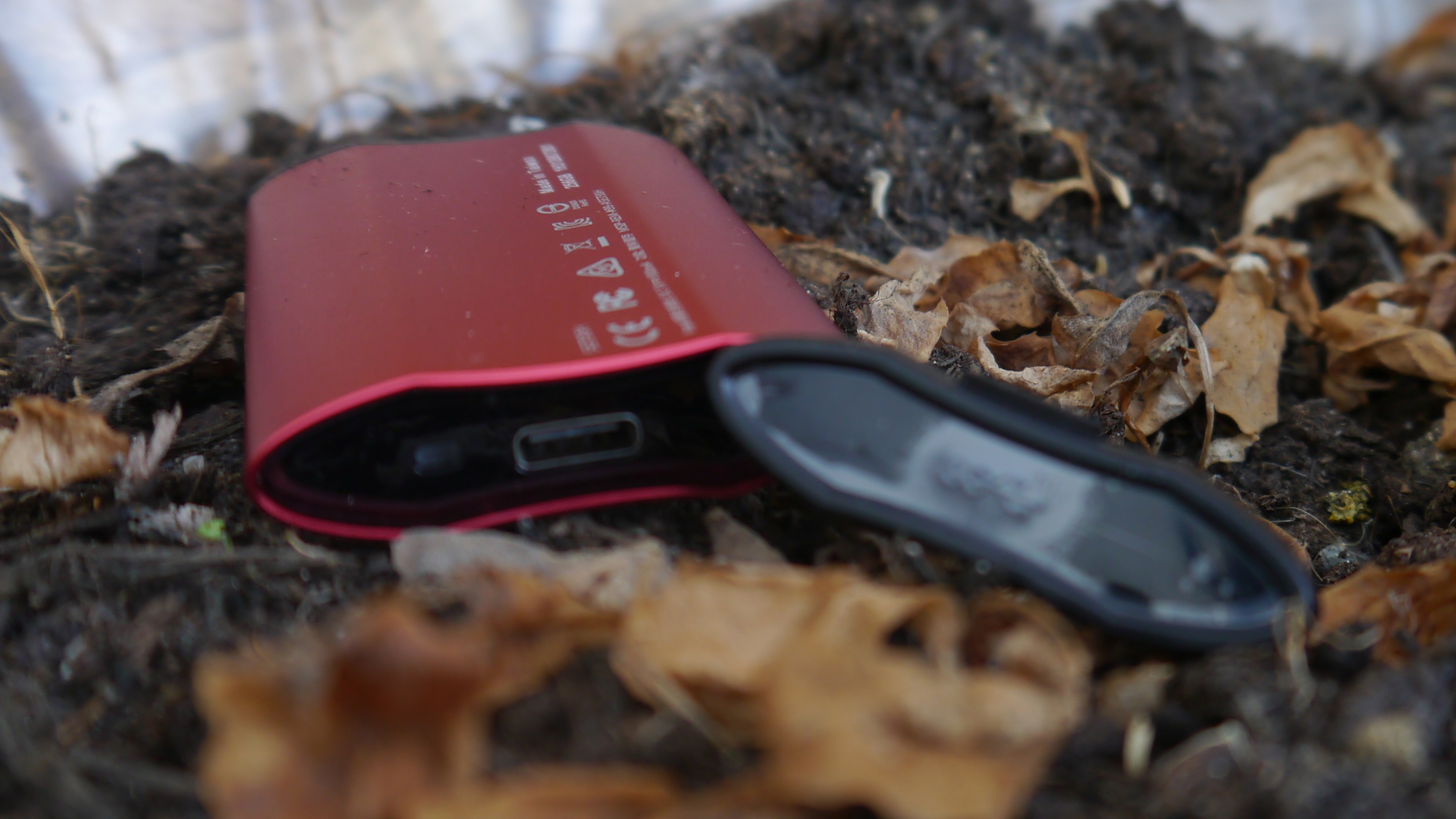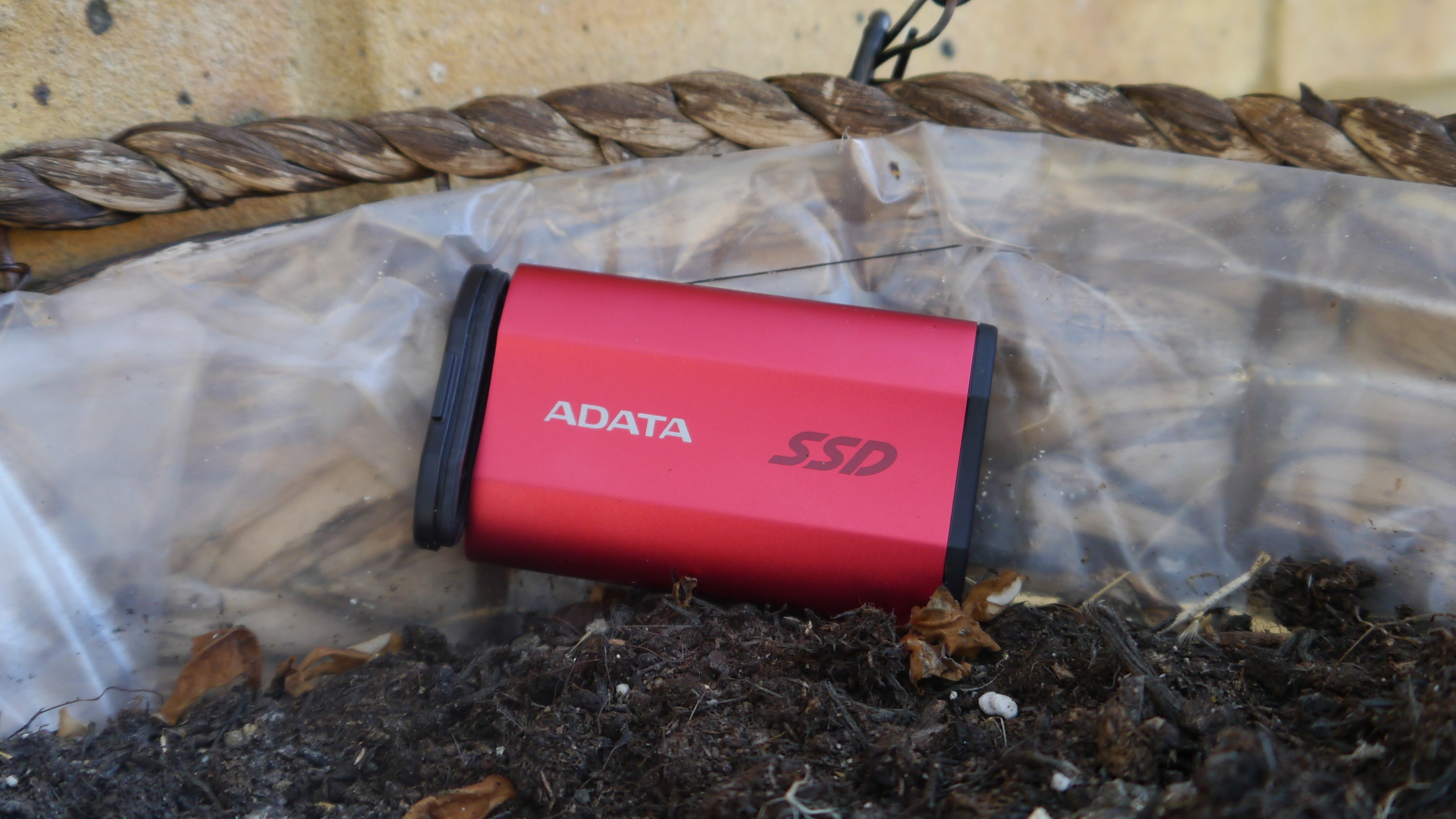TechRadar Verdict
Fast, waterproof and affordable, the Adata SE730H should be near the top of your shopping list if you’re looking for a versatile and dependable drive that can take a serious amount of abuse.
Pros
- +
Tiny
- +
Great performance
Cons
- -
Still more expensive than the competition
- -
Would prefer a black color option
Why you can trust TechRadar
Solid-state drives have pushed hard disks out of the mainstream to niche markets where performance is far less important than the sheer price per GB.
SSDs maintain their decade-old advantages of better performance, lower power consumption and higher reliability regardless of any advances in magnetic technology.
But in a market dominated by Samsung, other smaller manufacturers have had to innovate in order to survive and thrive. One of them is Adata which sent over the SE730H (not to be confused with the older SE730), an external SSD that’s minuscule, ruggedized, sports a USB Type-C connector and promises spectacular performance levels.
The drive carries a recommended retail price of £129 ($170) but the cheapest we could find it selling for was £141 ($185) at Amazon (at the time of writing).
Design
Adata pitches this device as the world’s most compact external SSD. At 72.7 x 44 x 12.2mm and weighing only 37g excluding the cable, it has a smaller footprint compared to Samsung’s T3 and T5, and is much lighter as well. It is slightly thicker, though, probably because it needs extra protection to earn its IP68 certification.
This drive – which is made of aluminum and rubber – is one of a handful on the market which have achieved IP68 certification. Assuming the cap hiding the USB Type-C connector is firmly in place, the drive is completely dust resistant and can remain under water (at 1.5m depth) for more than an hour.
The SE730H also meets the stringent MIL-STD-810G 516.6 impact resistance test so it should survive accidental drops and shocks without much damage. Other than the connector, the cap also hides an activity light that blinks when data is written or accessed.
Sign up to the TechRadar Pro newsletter to get all the top news, opinion, features and guidance your business needs to succeed!
Adata plumped for gold and red brushed metallic colors for the drive; we’d prefer the more subtle, less flashy anthracite color of the Samsung T5, mainly because scratches will be less obvious. The peculiar shape of the drive – from the side it looks like a pinched oval cylinder – makes it easier to hold thanks to the improved levels of grip.
You will also find plenty of logos and writing on both sides of the device.

Hardware
Like most of the Adata drives we have reviewed recently (Adata SSD Ultimate SU800, Adata SD700 External SSD and the Adata SV620H), this drive features 3D TLC technology which is likely to be the same as its SU800 sibling.
We pried open the device to find one chip covered with what looked like a Blutag, a large Adata 121104747533A03 chip, a Nanya 1711 nt5cc128M-161pd1 128MB buffer memory and a VLI VL714-Q4 USB 3.1 to SATA 6Gb/s bridge controller for the Type-C connector.
It doesn’t come as a surprise that the latter connects to an M.2 2242 SSD which houses the flash memory, probably IMFT’s 384Gbit TLC 3D NAND (the same as the SU800), technology that Adata says is more durable – by up to 25% – and power-efficient compared to 2D NAND.
Note that the drive is available in 256GB and 512GB versions and that the operating temperature quoted for the SE730H is 5°C (41°F) to 50°C (122°F). Other than a standard three-year warranty, the final point worth noting is the fact that this SSD draws up to 4.5W (5V, 0.9A).

In use
Two applications – OStoGO and HDDtoGo – are bundled. The first app is an alternative solution to install an operating system without using an optical drive. The second one is more of a toolkit that offers no-trace browsing, file synchronization, data compression, encryption and more.
Adata claims that the drive can reach read/write speeds of 500MBps when combined with a USB 3.1 Gen 2 10Gbps connector. We hit 432MBps and 413MBps (read and write respectively) on CrystalDiskMark and 443MBps (both read and write) on Atto; copying a 10GB file using Teracopy took 43 seconds.
These results were obtained on a laptop with a USB 3.1 Gen 1 connector which is limited to 5Gbps, so the numbers obtained in the test are close to the theoretical limits (once you account for transfer overheads and so forth).
In comparison, the 1TB version of the Samsung T5 reached 432MBps and 323MBps (read/write on CrystalDiskMark) and 323MBps and 462MBps (read/write on Atto) which shows that the SE730H is not lagging behind the competition.

The competition
Speaking of which, there are only a few competitors to the Adata drive that come with an IP68 rating. And funnily enough, two of them are Adata products: the SD700 and the SE730, the predecessor of the SE730H.
Amazingly, no other mainstream vendors (Samsung, SanDisk, Freecom, Transcend or OWC) have released a ruggedized SSD device. We guess there’s a gap in the market that could be lucrative for some.
The Adata SD700 delivers the cheapest IP68 certified storage at only £0.30 per GB (for the 1TB version) while the 256GB model of the same drive sells for £92 ($120), significantly cheaper than the SE730H which costs almost 50% more at the time of writing.
The cheapest external SSD product (on a per GB basis) is the Amazon-sourced G-Tech G-Drive Slim SSD USB Type-C which sells for £245 ($320), a staggering £0.245 per GB, around 20% less than the competition. It is not waterproof, but given that this is a solid-state drive, it’s likely to be shockproof; and who knows, it may be reduced further still in Black Friday price-cutting.
Final verdict
Adata’s highlighted unique selling point here is the use of a USB 3.1 Gen 2 connector, but sadly this position is without any merit as the SE730H still uses SATA technology which is limited. A move towards NVMe would solve that, but would also significantly add to the price of the drive.
That’s not to say that the Adata SE730H is a bad external SSD – far from it. Although its performance is lower than promised by the manufacturer, it is still competitive with the likes of the Samsung T5 or even the SD700.
The latter remains our favorite, though. Sure, it doesn’t come with a Type-C connector and is a tad heavier, but it is much cheaper and looks sturdier.
- We’ve picked out the best portable drives for your PC or Mac

Désiré has been musing and writing about technology during a career spanning four decades. He dabbled in website builders and web hosting when DHTML and frames were in vogue and started narrating about the impact of technology on society just before the start of the Y2K hysteria at the turn of the last millennium.
